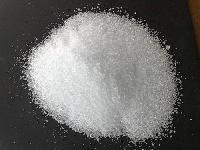

They guarantee professional and customised consultancy and services. The company, which is active in international distribution and trading, is organised into industrial segments that are managed by teams of specialists and experts. We have been distributing chemical products for over 100 years and we have a special interest in protecting the environment and in the safety of our facilities and collaborators.Įstablished in 1913 as a small grocery store, in its over 100 years of activity ECSA Chemicals has become one of the most important Swiss-owned distributors of chemical products. With an organisation divided into industrial segments managed by specialists, it has become one of the largest distributors worldwide.ĮCSA Chemicals is the largest Swiss-owned company in terms of warehouses for the distribution of chemical products. doi: 10.1002/ Chemicals has been active since 1913 in the trading and international commerce of raw materials. "Domino Catalysis in the Direct Conversion of Carboxylic Acids to Esters". "Esterification of Carboxylic Acids with Dicyclohexylcarbodiimide/4-Dimethylaminopyridine: tert-Butyl Ethyl Fumarate". "The DMAP-Catalyzed Acetylation of Alcohols - A Mechanistic Study (DMAP = 4-(dimethylamino)-pyridine)". Ullmann's Encyclopedia of Industrial Chemistry. ^ Shimizu, Shinkichi Watanabe, Nanao Kataoka, Toshiaki Shoji, Takayuki Abe, Nobuyuki Morishita, Sinji Ichimura, Hisao (2007)."Chiral Dialkylamine Catalysts in Asymmetric Synthesis". "4-Dialkylaminopyridines as Highly Active Acylation Catalysts". ^ Donald J Berry Charles V Digiovanna Stephanie S Metrick Ramiah Murugan (2001)."Organocatalysis Paradigm Revisited: Are Metal-Free Catalysts Really Harmless?". ^ a b c d Nachtergael, Amandine Coulembier, Olivier Dubois, Philippe Helvenstein, Maxime Duez, Pierre Blankert, Bertrand Mespouille, Laetitia (9 February 2015).^ a b c Sigma-Aldrich Co., 4-(Dimethylamino)pyridine.
#Acetic anhydride sds sigma aldrich full
"Extension of the Self-Consistent Spectrophotometric Basicity Scale in Acetonitrile to a Full Span of 28 pKa Units: Unification of Different Basicity Scales". Safety ĭMAP has a relatively high toxicity and is particularly dangerous because of its ability to be absorbed through the skin. In this case, DMAP acts as a base and deprotonates the phenol, and the resulting phenolate ion adds to the anhydride.

For example, the reaction runs through a base-catalyzed reaction pathway in the case of a phenol. The reaction runs through the described nucleophilic reaction pathway irrespective of the anhydride used, but the mechanism changes with the pKa value of the alcohol used. In the last step of the catalytic cycle the auxiliary base (usually triethylamine or pyridine) deprotonates the protonated DMAP, reforming the catalyst. The acetic acid formed will then protonate the DMAP. The described bond formation and breaking process runs synchronous concerted without the appearance of a tetrahedral intermediate. The bond from the acetyl group to the catalyst gets cleaved to generate the catalyst and the ester. Here the acetate acts as a base to remove the proton from the alcohol as it nucleophilically adds to the activated acylpyridinium. In the second step the alcohol adds to the acetylpyridinium, and elimination of pyridine forms an ester. First, DMAP and acetic anhydride react in a pre-equilibrium reaction to form an ion pair of acetate and the acetylpyridinium ion. In the case of esterification with acetic anhydrides the currently accepted mechanism involves three steps.


 0 kommentar(er)
0 kommentar(er)
